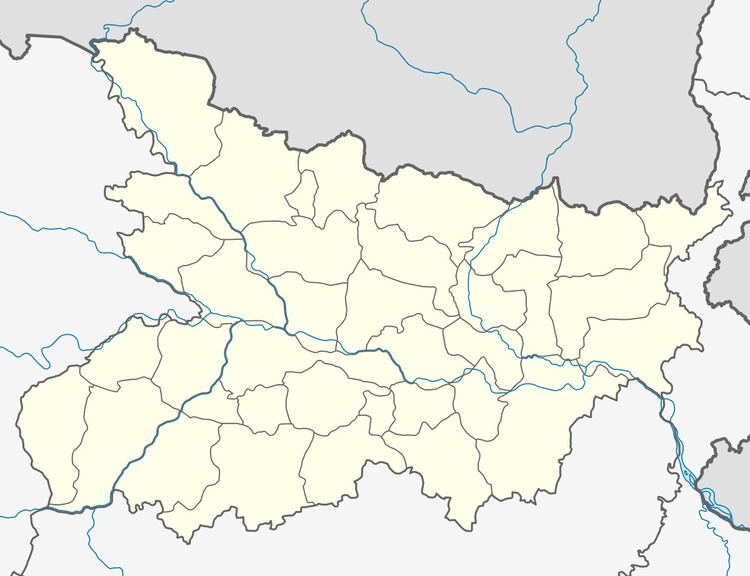Tracks 10 Elevation 35 m | Opened 1889 Platforms in use 7 | |
 | ||
Operated by North East Frontier Railway Line(s) Barauni-Katihar section of Barauni-Guwahati lineKatihar-Siliguri lineKatihar-Malda Town lineKatihar-Jogbani lineKatihar-Manihari-Teznarayanpur lineKatihar-Purnea-Saharsa line Structure type Standard (on ground station) Similar Barauni Junction railway st, Khagaria Junction railway st, Barsoi Junction railway st, Kishanganj railway station, New Jalpaiguri Junction r | ||
Katihar junction railway station india
Katihar Junction railway station serves Katihar city in Katihar district in the Indian state of Bihar. The Katihar Junction railway station is connected to most of the major cities in India by the railway network.
Contents
Katihar lies in between Barauni-Katihar section of Barauni-Guwahati line
Katihar-Siliguri line which serves the city with numerous number of trains to Guwahati, Kolkata, Delhi, Dalkhola and with many other cities.
History
East Indian Railway Company (EIR) opened the Manihari-Katihar-Kasba section in 1888 and the North Bengal Railway opened the Katihar-Raiganj section the same year. EIR opnened the Barsoi-Kishanganj section in 1889. All these lines were 1,000 mm (3 ft 3 3⁄8 in) wide metre gauge lines. Darjeeling Himalayan Railway, operating 2 ft (610 mm) narrow gauge lines, extended their operations from Siliguri to Kishanganj in 1915 and to Dalkhola.
Siliguri was connected to Kolkata via the eastern part of Bengal since 1878 (for details see Howrah-New Jalpaiguri Line). However, with the partition of India in 1947, railway services in the region were completely disrupted. In 1949, the narrow gauge Siliguri-Kishanganj section was upgraded to metre gauge. Thus there was a direct metre gauge connection from Manihari to Siliguri via Katihar. The importance of Katihar station grew because of the jute mill in the region.
Gauge conversion
In the early 1960s, when Farakka Barrage was being constructed, Indian Railways took the initiative to extend 1,676 mm (5 ft 6 in) wide broad gauge rail link from Kolkata.
The 2,240 m (7,350 ft) long Farakka Barrage carries a rail-cum-road bridge across the Ganges. The rail bridge was opened in 1971 thereby linking the Barharwa-Azimganj-Katwa loop to Malda, New Jalpaiguri and other railway stations in North Bengal.
Gauge conversion work (from metre gauge to broad gauge) in the Barauni–Katihar section was taken up in 1978-79 and completed in 1982.
The Siliguri-Katihar line was the last surviving metre gauge line in the area. The Aluabari Road-Katihar section already had a broad gauge line running alongside the metre gauge line. The Aluabari Road-Siliguri section needed to be converted. Conversion work was taken up in 2008, train services in the section was suspended and conversion work completed early in 2011.
Amenities
Facilities available are those of Waiting halls, Reservation counters, washrooms, tea stalls, book shops & dairy stalls to name a few .The junction also holds a Railway Police Office.
Looking into the growing importance of the junction & the passenger influx & outflux year after year the junction has been planned to be upgraded and modernised to best of the facilities. The North-East Frontier Railways has planned to install Elevators, Wi-Fi hotspots, trolleys, shops & make the junction lucrative in all ways.
JUNCTION OVERVIEW
Electrification of Katihar junction is under progress and is expected to complete by May 2016. Katihar is well connected to most of the major cities & almost the entire of India. Trains passing through the junction are bound for nearly all directions.
There are trains departing for Kolkata(Sealdah & Chitpur), Patna(Patna Junction & Rajendra Nagar Terminus), New Delhi (Anand Vihar & Naw Delhi Junction), Dhanbad, Mumbai, Guwahati, Siliguri, Lucknow, Kanpur, Jamshedpur, Ranchi, Vishakhapatman, Chennai & Bangalore to name a few .
It is one of the most important junctions in India and interestingly almost every train routed for the North-East region with New Delhi /NCR being their origin pass through Katihar. These trains not only have scheduled halts but in fact receive good number of passengers to & from Katihar, the nearby Purnea & all nearby blocks & villages. Katihar Junction caters to all sorts of needs be it travelling, business, tourism for the people of almost entire Seemanchal region.
It is privileged to have not just one but two Rajdhani Express trains having scheduled stoppages under its premises both of which are bound for Delhi from Guwahati & Dibrugarh respectively. Besides these other major trains which have gained a popular name throughout the nation do have a stoppage at Katihar Junction.
The junction do serve as one of the Divisional Headquarters of Northeast Frontier Railways (NFR).
The junction currently has around 10-11 platforms & continues to expand with all sorts of ultra-modern amenities.
Platforms
There are 7 functional platforms at Katihar junction while more are to be expected in the near future due to the demand and growing importance of the city & nearby regions. The platforms are interconnected & have multiple Foot over bridges (FOB) traversing through the junction to facilitate general locomotion & other city pedestrians. One of the reasons for it is the city centric location of the junction region.
The platforms have been installed with televisions, digital clock display, surveillance cameras, shops with all sorts of seating arrangements. The platforms are also regularly patrolled by the police officials to keep a check on criminal activities owing to the sensitive location of this border town.
